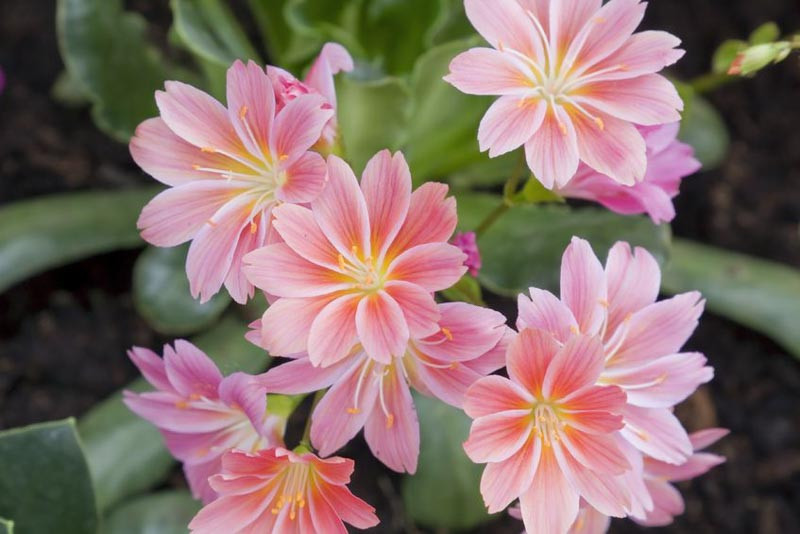langerhanscellhistiocytosis.org – The Siskiyou Lewisia (Lewisia cotyledon), a native perennial flower, is renowned for its breathtaking beauty and remarkable resilience. Native to the Siskiyou Mountains of southern Oregon and northern California, this stunning flower has become a prized addition to rock gardens and native plant collections. Its ability to thrive in challenging environments makes it a true testament to the wonders of nature.
Physical Characteristics of the Siskiyou Lewisia
The Siskiyou Lewisia is a low-growing, evergreen perennial that typically forms a rosette of thick, fleshy, lance-shaped leaves. The leaves are a rich, green color, often taking on a reddish tint at the edges, giving the plant a striking appearance even when not in bloom.
In spring to early summer, the Siskiyou Lewisia produces an exquisite display of flowers, which come in a range of colors, including shades of pink, white, and purple. Each flower is composed of five delicate, petal-like structures with bright yellow stamens at the center, creating a stunning contrast of colors. These flowers, often appearing in clusters atop short stems, are known for their unique star-like shape and for blooming in a variety of conditions, from full sun to partial shade.
Growing Conditions and Care
Siskiyou Lewisia is known for its ability to grow in the most challenging of environments. It is primarily found in rocky outcrops, gravelly hillsides, and mountain slopes, which means it is well-suited to dry, well-drained soil. The plant prefers slightly acidic to neutral soil, and it thrives in full sun or partial shade, with a preference for cooler temperatures.
This hardy flower is drought-tolerant once established and can withstand periods of dry weather. However, like many alpine plants, it is susceptible to root rot if overwatered, so well-draining soil is crucial to its success. For gardeners looking to cultivate Siskiyou Lewisia, planting it in a rock garden or using a raised bed with good drainage will encourage healthy growth and blooming.
Ecological Role of Siskiyou Lewisia
Siskiyou Lewisia is a critical component of the alpine and subalpine ecosystems where it is found. As a native species, it contributes to the biodiversity of the region, providing nectar to pollinators such as bees and butterflies during the spring and summer months. Its small, compact growth habit allows it to thrive in environments with limited resources, making it an excellent choice for xeriscaping and conservation efforts.
In its natural habitat, Siskiyou Lewisia can also play a role in preventing soil erosion, particularly on rocky slopes where other plants may struggle to take root. Its deep root system anchors the soil, helping to stabilize the terrain.
Medicinal and Cultural Uses
While Siskiyou Lewisia is not widely used in traditional medicine, the genus Lewisia to which it belongs has historically been of interest to various Indigenous peoples. Some species in the genus have been used for medicinal purposes, though the Siskiyou Lewisia itself is not commonly employed in this way.
Today, the primary value of Siskiyou Lewisia lies in its ornamental appeal and its ecological benefits. Its beauty and resilience have earned it a place in botanical gardens and native plant landscapes, where it adds both color and diversity to a variety of settings.
Conclusion
The Siskiyou Lewisia flower is a remarkable example of nature’s resilience and beauty. Its ability to thrive in harsh conditions and provide a striking visual display makes it a cherished addition to gardens and natural landscapes alike. For those interested in cultivating native plants or adding a touch of elegance to a rock garden, the Siskiyou Lewisia is a perfect choice that will continue to impress with its hardy nature and vibrant blooms year after year.

